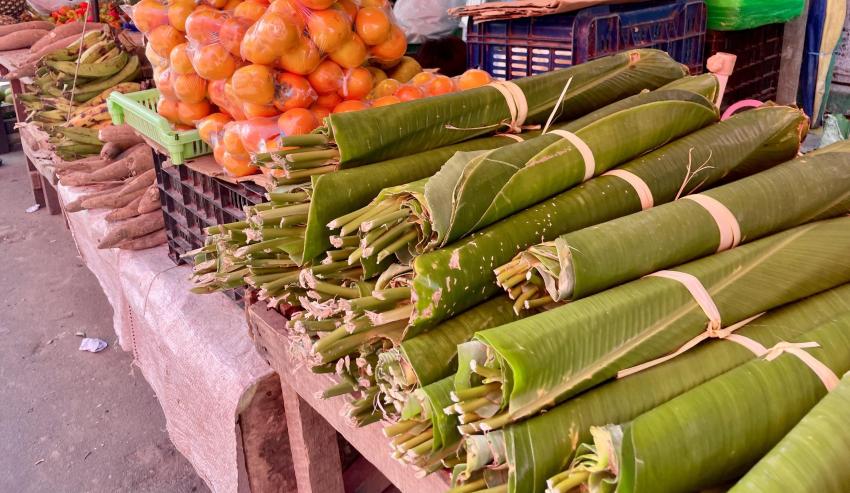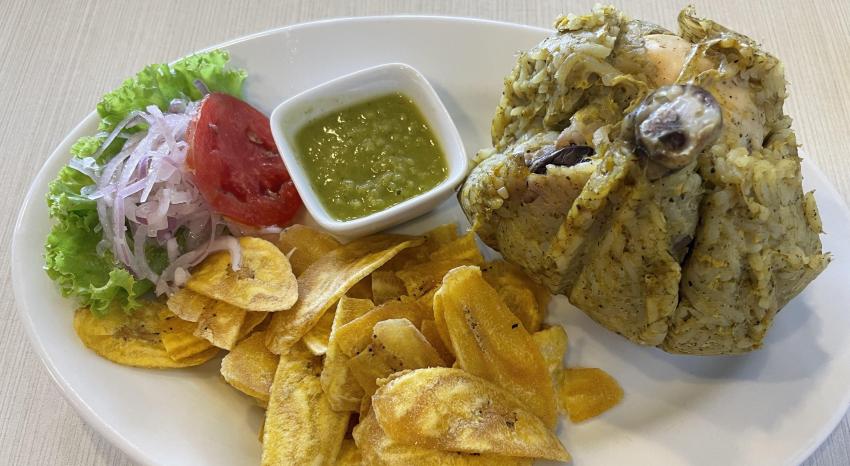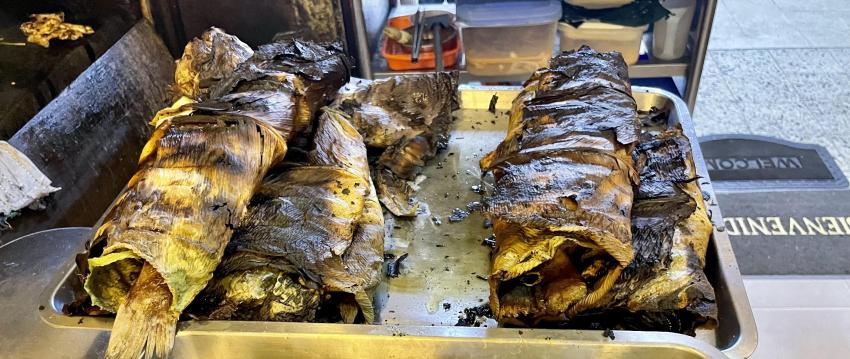Iquitos Food
Eating in the jungle

Traditional foods like juane (above) and patarashca are cooked in bijao leaves. Bijao is the leaves of the heliconia, which is the family of tropical plants that includes bird of paradise.

Juane is rice and meat wrapped in bijao leaves and boiled or steamed. (below)

Patarashca is fish wrapped in bijao leaves and grilled. (below)

Aguaje
The most ubiquitous food you’ll see in Iquitos is aguaje. This is a fruit that grows on the aguaje palm. It’s not very sweet and not even good to eat raw, but it’s used in large quantities for aguaje juice, ice cream & popsicles. By some estimates, Iquitos consumes several tons per day, up to a pound per person, per day. The most popular local brand of ice cream & popsicles is Shambo.